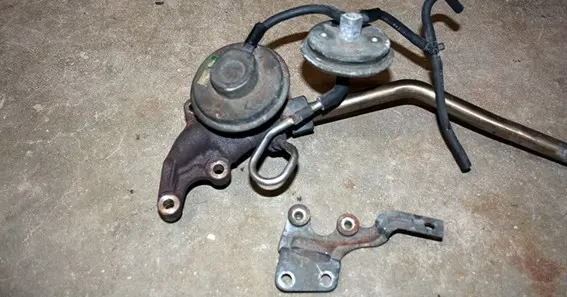The Nissan S14, a beloved model among car enthusiasts, often undergoes various modifications to enhance performance and reliability. One such modification is the deletion of the Exhaust Gas Recirculation (EGR) system. Understanding the reasons behind this modification can help owners make informed decisions about their vehicles.
What is the EGR System?
The EGR system recirculates a portion of the engine’s exhaust gases back into the intake manifold, aiming to reduce nitrogen oxide (NOx) emissions by lowering combustion temperatures. While effective for emission control, some drivers consider removing it for various reasons.
Reasons for Deleting the EGR in Nissan S14
- Engine Bay Simplification
Removing the EGR system can declutter the engine bay, making it cleaner and more accessible for maintenance or other modifications.
- Preventing Potential Malfunctions
A malfunctioning EGR valve can lead to issues such as rough idling or reduced engine performance. Some owners prefer to eliminate the system entirely to avoid these potential problems.
- Facilitating Turbocharger Installations
For those looking to install a turbocharger, the EGR system can pose challenges in connecting to the turbo manifold or downpipe. Removing the EGR simplifies this process.
Considerations Before Proceeding with an EGR Delete
- Emission Compliance
The EGR system plays a crucial role in reducing NOx emissions. Removing it may lead to increased emissions, potentially making the vehicle non-compliant with local environmental regulations.
- Check Engine Light (CEL) Activation
Deleting the EGR can trigger the CEL due to the ECU detecting the absence of the system. To prevent this, some opt to install a resistor in place of the EGR temperature sensor to simulate its presence.
- Performance Impact
It’s important to note that the EGR system is typically inactive during wide-open throttle conditions, meaning its removal may not result in significant performance gains.
FAQ
- What is the primary function of the EGR system in the Nissan S14?
The EGR system reduces NOx emissions by recirculating a portion of exhaust gases back into the intake manifold, lowering combustion temperatures.
- Will deleting the EGR system improve my Nissan S14’s performance?
Since the EGR system is inactive during full-throttle conditions, its removal is unlikely to yield noticeable performance improvements.
- Are there legal implications to removing the EGR system?
Yes, deleting the EGR can increase emissions, potentially violating local environmental regulations and leading to legal consequences.
- How can I prevent the Check Engine Light from activating after an EGR delete?
Installing a resistor in place of the EGR temperature sensor can simulate the system’s presence, preventing the CEL from illuminating.
- Does removing the EGR system affect fuel efficiency?
The impact on fuel efficiency is generally minimal, as the EGR system primarily operates during light-load conditions to reduce emissions.
Before deciding to delete the EGR system in your Nissan S14, it’s essential to weigh the potential benefits against the environmental and legal considerations. Consulting with automotive professionals or local authorities can provide further guidance tailored to your situation.










